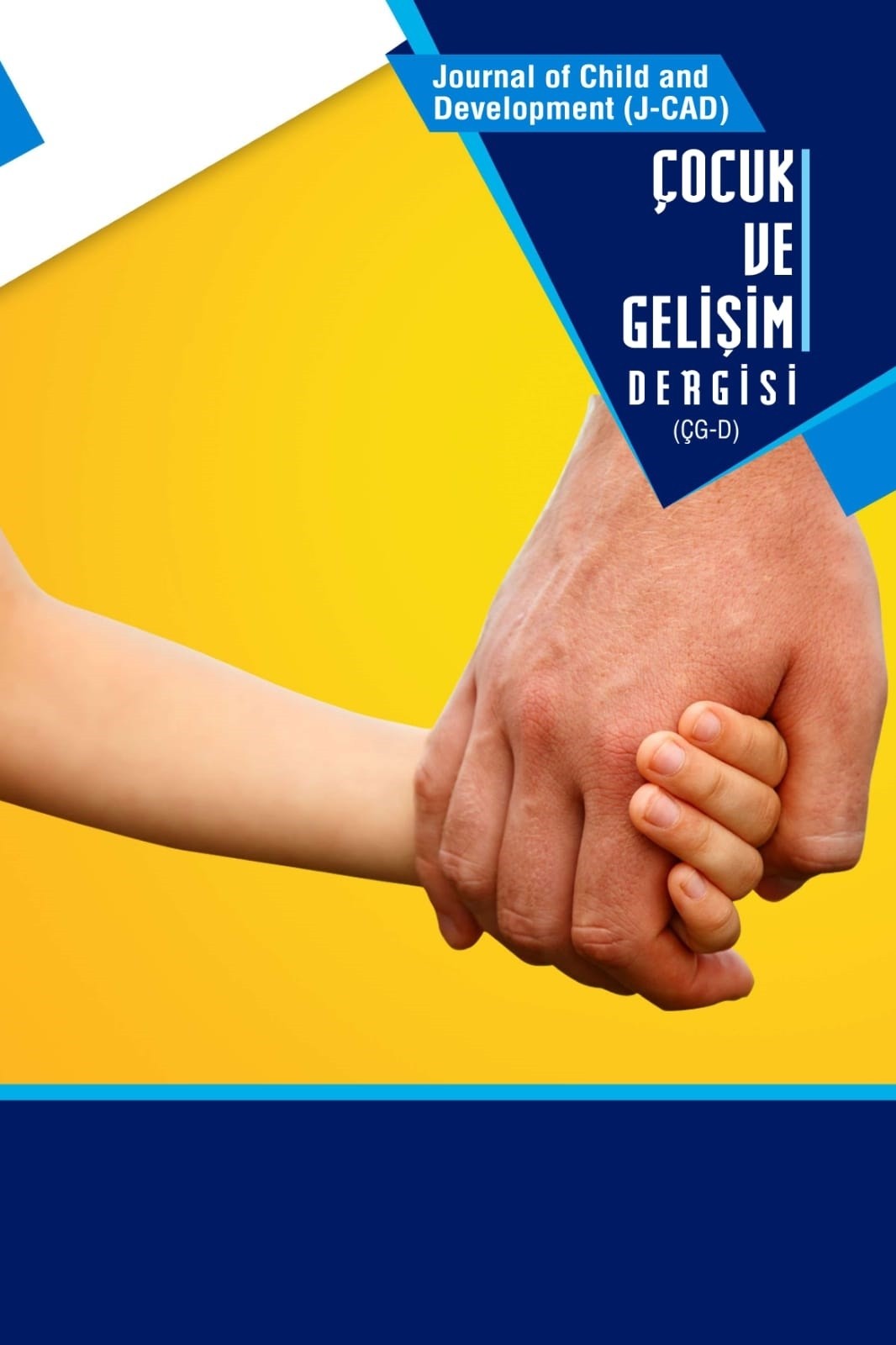Otizm Spektrum Bozukluğunda El 2D:4D Parmak Oranı ve Yüz Simetrisi
otizm spektrum bozukluğu, otizm, simetri, yüz simetrisi, 2D:4D parmak oranı
Symmetry of Hand 2D:4D Digit Ratio and Face in Autism Spectrum Disorder
autism spectrum disorder, autism, symmetry, facial symmetry, 2D:4D ratio,
___
- Stewart I. (2007). Why Beauty Is Truth: The History of Symmetry Basic Books; 1st edition.
- Auyeung, B., Baron-Cohen, S., Ashwin, E., Knickmeyer, R., Taylor, K., Hackett, G. (2009). Fetal testosterone and autistic traits. Br J Psychol, 100; 1-22.
- Baron-Cohen, S., Lombardo, M.V., Auyeung, A., Ashwin, E., Chakrabarti, B., Knickmeyer, R. Why are autism spectrum conditions more prevalent in males? PLoS Biol, 9(6): e1001081.
- Beking, T., Geuze, R.H., van Faassen, M., Kema, I.P., Kreukels, B.P.C., Groothuis, T. (2018). Prenatal and pubertal testosterone affect brain lateralization. Psychoneuroendocrinology, 88;78-91
- Penton-Voak, I.S., Jones, B.C., Little, A.C. et al. (2001, April 9). Symmetry, Sexual Dimorphism in Facial Proportions and Male Facial Attractiveness. Proceedings of the Royal Society of London. B, Biological Sciences, 268; 1617-1623.
- Borraz-Leon, J.I., Cerda-Molina, A.L., Mayagoitia-Novales, L. (2017). Testosterone Level Changes After Perceiving the Body Odour of a Possible Rival in Human Males: The Role of Facial Symmetry. Behaviour, 154 (6): 677-691.
- Sanchez-Pages, S., Turiegano, E. (2009, November 24). Testosterone, Facial Symmetry and Cooperation in the Prisoners’ Dilemma. Physiol Behav, 99(3):355-361.
- Archer J. (2006). Testosterone and human aggression: an evaluation of the challenge hypothesis. Neurosci. Biobehav. Rev. 30: 319-345.
- Borráz-León J.I., Cerda-Molina A.L., Hernández-López L., Chavira-Ramirez R., de la O-Rodríguez C. (2014). Steroid hormones and facial traits in the recognition of a potential rival in men. Ethology 120: 1013-1023.
- Carolyn R. Hodges-Simeon, Katherine N. Hanson Sobraske, Theodore Samore, Michael Gurven, and Steven J. C. Gaulin. Facial Width-To-Height Ratio (fWHR) Is Not Associated with Adolescent Testosterone Levels. PLoS One. 2016; 11(4): e0153083.
- Grammer K., Thornhill R. (1994). Human (Homo sapiens) facial attractiveness and sexual selection: the role of symmetry and averageness. J. Comp. Psychol. 108: 233-242.
- Little A.C. (2014). Domain specificity in human symmetry preferences: symmetry is most pleasant when looking at human faces. Symmetry 6: 222-233.
- Fink B., Weege B., Manning J.T., Trivers R. (2014). Body symmetry and physical strength in human males. Am. J. Hum. Biol. 26: 697-700.
- Baron-Cohen, B (2002). The extreme male brain theory of autism. Trends Cogn Sci 1;6(6):248-254. doi: 10.1016/s1364-6613(02)01904-6.
- Mackus, MD, de Kruijff, L. S. Otten, A. D. Kraneveld, J. Garssen, and J. C. Verster. The 2D : 4D Digit Ratio as a Biomarker for Autism Spectrum Disorder. Autism Res Treat. 2017; 2017: 1048302.
- Manning J. T., Bundred P. E. The ratio of 2nd to 4th digit length: A new predictor of disease predisposition? Medical Hypotheses. 2000;54(5):855–857. doi: 10.1054/mehy.1999.1150.
- Simon Baron-Cohen ,Michael V. Lombardo,Bonnie Auyeung,Emma Ashwin,Bhismadev Chakrabarti,Rebecca Knickmeyer. Why Are Autism Spectrum Conditions More Prevalent in Males? PLoS Biol 9(6): e1001081. doi:10.1371/journal.pbio.1001081.
- Baron-Cohen S (2003) The essential difference: men, women and the extreme male brain. Penguin: London.
- Yayın Aralığı: Yılda 2 Sayı
- Başlangıç: 2018
- Yayıncı: Hatice BEKİR
Esra AYVALI ÇETİN, Sultan TARLACI
Resimli Öykü Kitaplarının Beslenme Alışkanlıkları ve Yeme Davranışları Açısından İncelenmesi
Beyhan Özge YERSEL, Ender DURUALP
Üniversite Öğrencilerinin Duygusal İhmal Kavramına İlişkin Metaforik Algıları
Fatma ÖZSERT, Mine KAZAK, Eda Aslı ÖZDEMİR, Figen ÇOK
Otizm Spektrum Bozukluğunda El 2D:4D Parmak Oranı ve Yüz Simetrisi
Birincil yaklaşımlar ve çocuk hakları çerçevesinden çocuklarda madde bağımlılığı
